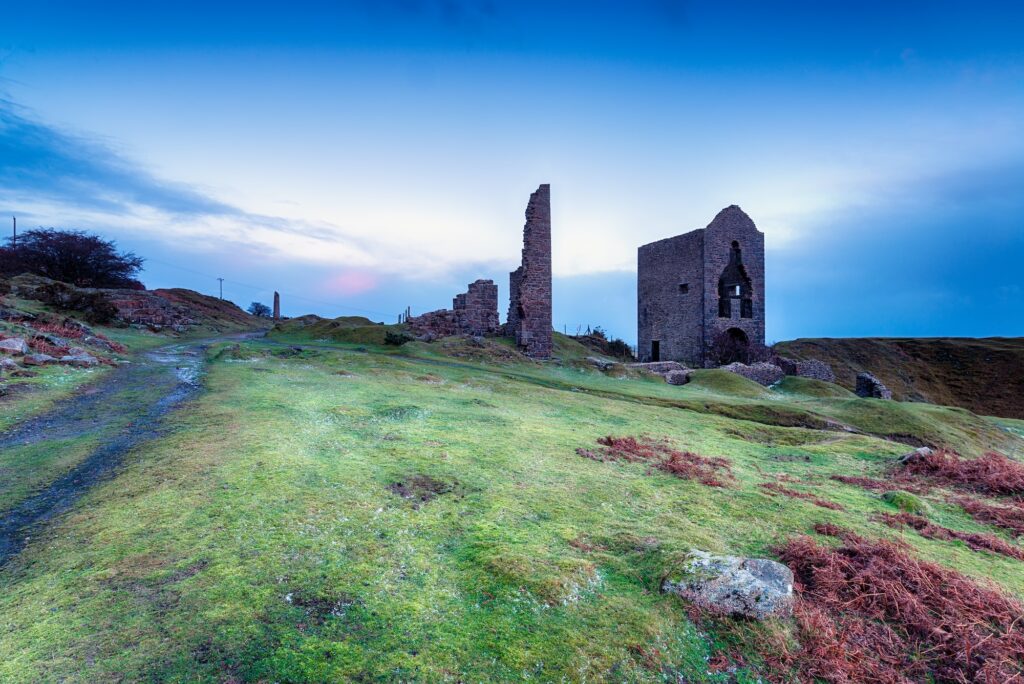

The World’s Greatest Mining Entrepreneur Strikes Again
Robert Friedland spent decades as an environmental pariah.
There are still places in Colorado where the moniker “Toxic Bob” gets thrown around. That’s because, in the early 1980s, he headed up Galactic Resources and helped develop its Summitville mine outside of Denver, Colorado.
Summitville was a brownfield site originally owned by mining giant, Anaconda. The company declined to mine gold there, due to the difficult terrain and low gold price. But Galactic, headed by Friedland, got the project and went ahead.
The mine, built by engineering giant Bechtel, was a disaster. It leaked cyanide into the watershed and became Colorado’s worst superfund site. It took 27 years to clean up the mess. It cost him $20 million, personally, to cover restoration work in the Alamosa River watershed.
It would be easy to simply take that history and write off anything Friedland did afterward. However, that would be a mistake.
Since then, Robert Friedland went on to make many incredible mining discoveries:
- Fairbanks Gold (1992) – Found the Fort Knox gold deposit.
- Diamond Fields (1994) – Found the giant Voisey’s Bay nickel deposit.
- Ivanhoe Mines (2000) – Found the massive Oyu Tolgoi copper-gold deposit in Mongolia.
- African Minerals (2000) – Found Platreef platinum group deposit.
- Ivanhoe Mines (2009) – Found the massive Kamoa copper deposit.
Each iteration made Robert Friedland more aware of what a mine needed to be successful. And the most important attributes are environmental preservation and community buy-in. Today, Ivanhoe Mines (IVN) is the standard bearer for what a modern mining company should be.
Ivanhoe Mines sets a high bar for other mines to reach. it is a leader in environment, social, and governance practices. And it even has a net zero pledge at one of its mines in Congo.
And that’s a direct result of his experience in Summitville. You don’t forget a $20 million lesson.
Ivanhoe Electric Is “Reinventing Mining for a Greener Future”
Friedland’s latest company, Ivanhoe Electric (NYSE: IE) is his first foray back into the U.S. in 32 years.
A Quick Note About the Classes of Mineral Resources and Reserves
Mining exploration is all about finding areas of the earth with a concentration of metal (or other commodity) that can be extracted at a cost that is less than the value of the product when sold.
That means the commodity concentration has to be high enough to offset the cost of building the mine and mining. That’s also why mines often shut down and restart. Because the commodity doesn’t go away. It just changes value depending on the price.
When geologists find a concentration of a commodity, they drill in a widening pattern to find the limits of the concentration. And then the company goes back and drills inside that concentration to figure out the grade. That is now what we would call a deposit.
Once the geologists have an outline of the deposit, they can find the resource.
A resource is a formal classification of a deposit that tells us the probability of its size and grade. And the probability changes by the density of drilling and sampling.
It’s like trying to tell the kind and size of a car by using tiny photographs. You may get a piece of a Chevrolet logo in one… but you have no idea if it’s a full-size truck or the tiniest model. Obviously, if you only have a couple of pictures, you don’t know much. The more pictures you get, the better you can figure out what kind of car it is.
That’s how resource calculations work. The more data, the higher the confidence (and the lower the risk). Here’s how resource classifications work:
The lowest probability (highest risk) is called inferred resources. That means the drill holes and samples are spaced too far apart to know if the deposit changes between them.
The middle category is called indicated resources. That means there is enough drilling to increase our confidence that the concentration doesn’t disappear between holes.
The highest confidence category is called measured resources. That means the drilling and sampling are dense enough to provide a high confidence in the size and distribution of the concentration of the commodity in the ground.
However, resources only describe the size of the mineral anomaly in a deposit. There is another set, called reserves, that adds economics. We’ll save the details for another day. But just remember, resources are the whole anomaly… reserves are the part that can be mined economically.
Technology
The first thing the company introduces in its corporate video (I recommend you watch the video here), is its powerful Typhoon geophysical survey system. This is a tool that allows geologists to “see” what’s under the ground without actually drilling it.
Ivanhoe Electric pairs its Typhoon survey with ultramodern computational geosciences (CGI) software. This system combines artificial intelligence with geophysical tools to process the data collected by Typhoon and create 3D models of the subsurface.
The results allow the technical team to make critical exploration decisions, which saves time and money. It also reduces exploration risk.
Energy Storage
The final piece of the Ivanhoe Electric value puzzle is its energy storage arm – VRB Energy. Ivanhoe owns a controlling interest in the company.
As I said, Ivanhoe Mines is the parent company of Ivanhoe Electric. And it is the leader in what we call “new mining.” This adherence to safety, environment, and community is part of its culture. And that carries over to Ivanhoe Electric too.
Action to Take: Ivanhoe Electric (NYSE: IE) is a U.S.-listed mining/technology company developing copper projects primarily in the United States. There is risk involved there.
The NIMBY crowd (not in my backyard) hates mines. Ivanhoe Electric limits that risk in its two primary projects by locating areas that are already either historic mining communities or actual historic mines.
And we always have commodity price risk. As we discussed recently in a weekly update, the copper price fell more than 35% in 2022. There will be volatility. However, we view copper economics in longer terms. And the five-year outlook for copper prices is strong.
In addition, Ivanhoe Electric’s partial ownership of VRB could outshine its copper exploration. This technology is exciting and merits investment in its own right.
We see Ivanhoe Electric as a strong performer over the next three to five years. We recommend buying Ivanhoe Electric (NYSE: IE) up to $12 per share and using a 25% trailing stop on the position.
For more information on how to use a trailing stop, you can read this Grove U issue.
For the Good,
Matt Badiali


